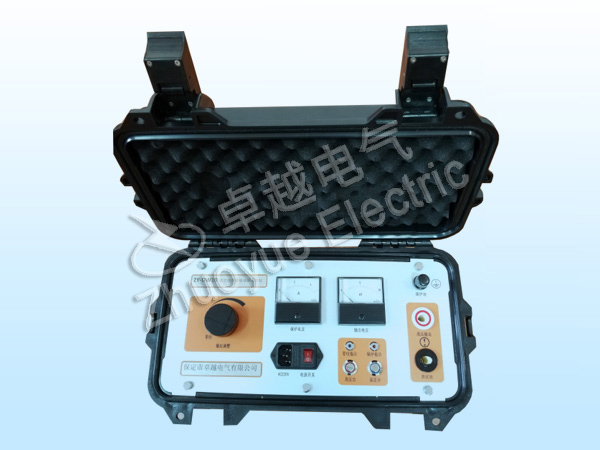
An overview,
Overhead line small current grounding fault locator is suitable for overhead line with small current grounding system. When the line is out of service due to single-phase grounding fault, the docking site of the device can be used for accurate positioning.
Overhead line low current ground fault locator is a set of portable equipment, which can locate the fault of multiple lines. The whole equipment consists of transmitter, sensor, receiver and accessories. After the fault line is out of service, the transmitter applies ultra-low frequency high voltage signal to the line to make the fault reappear. The sensor is hung on the line with an insulating rod along the line to detect the signal, and transmits data to the receiver on the ground through wireless mode, and the receiver displays the measurement results. Before the fault point, the current continues to exist, after the fault point, the current disappears. Rough segmentation can be performed first, and then precise location, so as to quickly determine the location of the fault.
Two, technical indicators
Positioning accuracy: 0.2 meters.
Transmitter output characteristics:
Output frequency 1Hz
Open circuit voltage: fundamental wave RMS 0~2800V,
(Pulsating DC, peak 8kV, equivalent to the peak phase voltage of 10kV line);
Short circuit current: fundamental wave RMS 0~35mA (pulsating DC, peak value 100mA)
Wireless communication distance between sensor and receiver: no less than 100m.
Transmitter power supply: AC 220V mains, can be connected to generator (output power ≥1500W).
Transmitter power: maximum power 900W.
Sensor power supply: 3 no.7 alkaline dry batteries.
Receiver power supply: 5 alkaline dry batteries, No. 5.
Volume:
Transmitter 417×234×318mm; Sensor 180×100×35mm; Receiver 205 * 100 * 35 mm
Mass: 16.8kg transmitter; Sensor 0.45kg; Receiver 0.45kg
Conditions of use: temperature :-10℃-40℃, humidity 5-90% RH, altitude <4500m.





 Home
Home Tel
Tel Product
Product